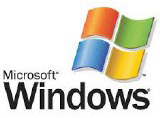Live
France24 English News Live StreamGlobal News
Global News Video PlaylistPBS
PBS News Video PlaylistNewsroom Features
The Honolulu Marathon: A Global Celebration of Running and Culture

See Special Report: The Honolulu Marathon: A Global Celebration of Running and Culture
Published Saturday December 13, 2025
Winter Storm Safety: Protecting People, Pets, and Communities

See Special Report: Winter Storm Safety: Protecting People, Pets, and Communities
Published Saturday December 13, 2025
Inclusive Holiday Gift Guide: Celebrate Christmas, Hanukkah, and Kwanzaa with gifts for People and Pets that warm hearts and paws

See Special Report: Inclusive Holiday Gift Guide: Celebrate Christmas, Hanukkah, and Kwanzaa with gifts for People and Pets that warm hearts and paws
Published Saturday December 06, 2025
Pearl Harbor Day: Honoring the Past, Inspiring the Future

See Special Report: Pearl Harbor Day: Honoring the Past, Inspiring the Future
Published Friday December 05, 2025
Top 10 Joyful Tech Picks for Cyber Monday 2025: Deals That Make You Sing

See Special Report: Top 10 Joyful Tech Picks for Cyber Monday 2025: Deals That Make You Sing
Published Wednesday November 26, 2025
How To Future-Proof Your Warehouse Storage
See Contributor Story: How To Future-Proof Your Warehouse Storage
Published Tuesday December 16, 2025
What Trucking Businesses Should Know About Trailer Storage

See Contributor Story: What Trucking Businesses Should Know About Trailer Storage
Published Monday December 15, 2025
5 Things First-Time Farmland Buyers Should Know

See Contributor Story: 5 Things First-Time Farmland Buyers Should Know
Published Sunday December 14, 2025
How Weather Affects Your Tires and Driving Safety

See Contributor Story: How Weather Affects Your Tires and Driving Safety
Published Saturday December 13, 2025
Why Inventory Management Needs a Disposal Strategy

See Contributor Story: Why Inventory Management Needs a Disposal Strategy
Published Friday December 12, 2025













